The opening sequence of the 2008 film adaptation of Doubt, written and directed by John Patrick Shanley, features the Church of St. Anthony and its adjacent school nestled in the Bronx's East Tremont neighborhood. This real-life location on Mansion Street serves as the backdrop for the fictional narrative that unfolds. It's a place from Shanley's past, one of three Catholic schools in the Bronx he attended in his youth. Shanley shares details about these formative experiences in his Playbill biography for the original Broadway production of Doubt: A Parable, narrating in the third person, "He was thrown out of St. Helena's kindergarten. He was banned from St. Anthony's hot lunch program for life. He was expelled from Cardinal Spellman High School.”
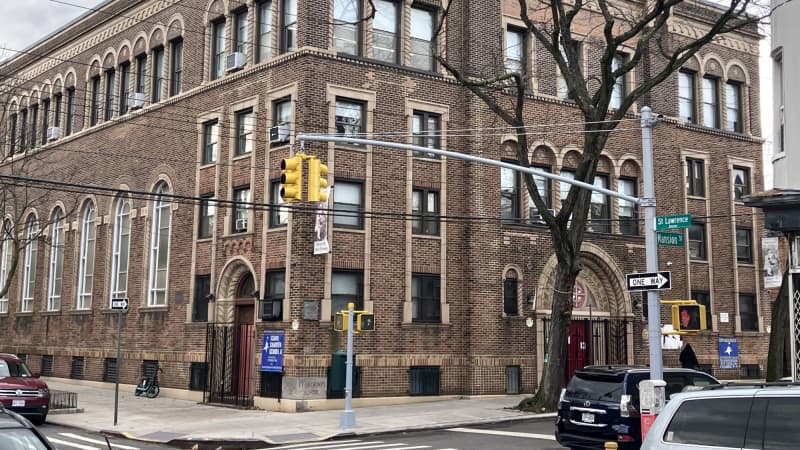
St. Anthony’s Parish, 2023. Photo by Daniel Robert Sullivan.
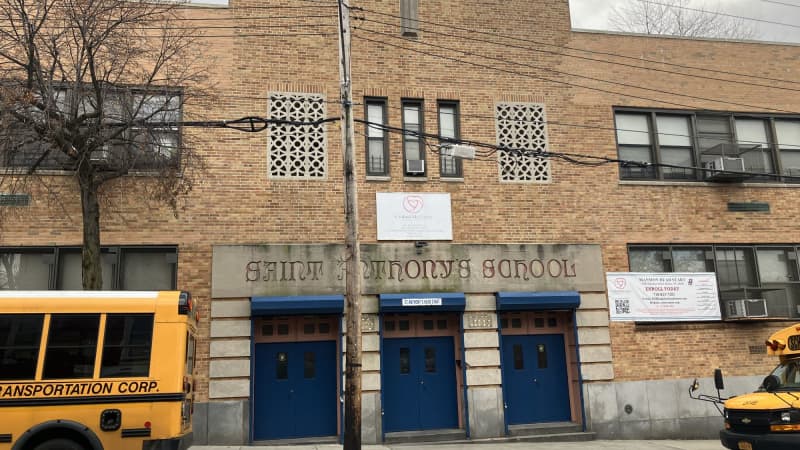
St. Anthony’s School, 2023. Photo by Daniel Robert Sullivan.
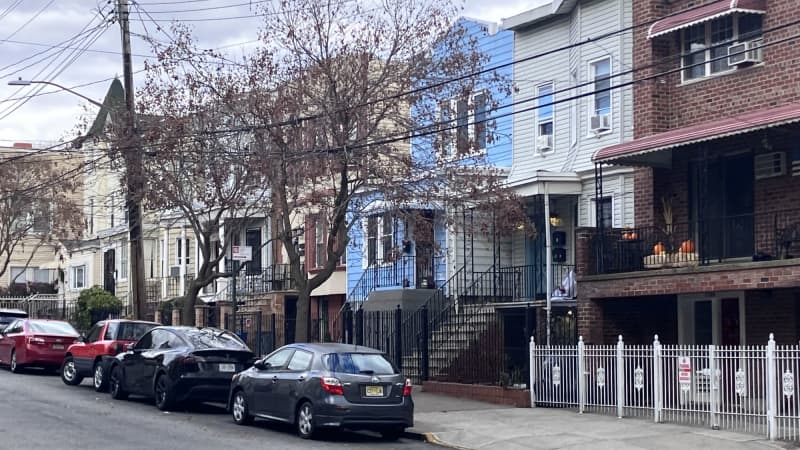
The neighborhood around St. Anthony’s School, 2023. Photo by Daniel Robert Sullivan.
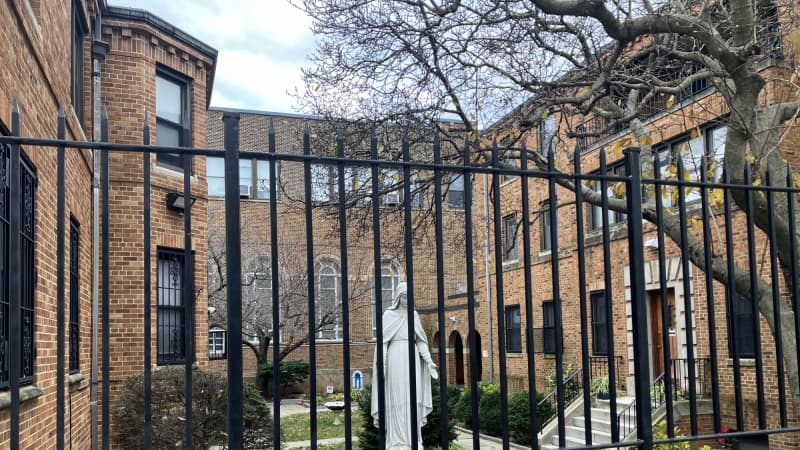
The courtyard of St. Anthony’s rectory, 2023. Photo by Daniel Robert Sullivan.
In the film’s first montage, a Chevrolet Impala parked outside the church's Romanesque walls firmly anchors us in the mid-1960s and young boys calling out to each other as they make their way to school encapsulates the essence of an era. For Shanley, this neighborhood remains the crucible of his youth. His misadventures within the school system - where authority and tradition clashed with the spiritedness of a young, often rebellious individual - parallel a broader clash between entrenched traditions and the energy of newer residents simmering in the community at the time.

Cardinal Spellman High School, 1962.
Photo by Samuel Gottscho, Gottscho-Schleisner Collection (Library of Congress).
Snapshot of a Neighborhood
In the broader tapestry of New York City, the Bronx often finds itself cast as the 'other,' eclipsed by the luminance of Manhattan. However, the Bronx boasts its own distinct culture and ambiance, both then and now.
For Shanley, the Bronx of the 1960s isn't merely a setting; it's a character unto itself - a presence that infuses his stories with an unmistakable authenticity. His narratives, many set against this specific backdrop, reflect the vivaciousness of a neighborhood thriving beyond the towering skyline of Manhattan.
Describing the Bronx of that era, Peter Quinn paints a vivid picture in Irish America Magazine:
Reeking of exhaust and incinerators, the Bronx was chockablock with pizzerias, German and Jewish delis, and Irish bars; blessed with spacious parks, a world-class zoo and botanical garden.
John Patrick Shanley himself echoed this sentiment in an interview on WNYC, affirming,
I feel like the Bronx is really the most legitimate part of New York at this time. The people are a little more grounded, a little more out of the rat race and more involved in community than the rest of the city.
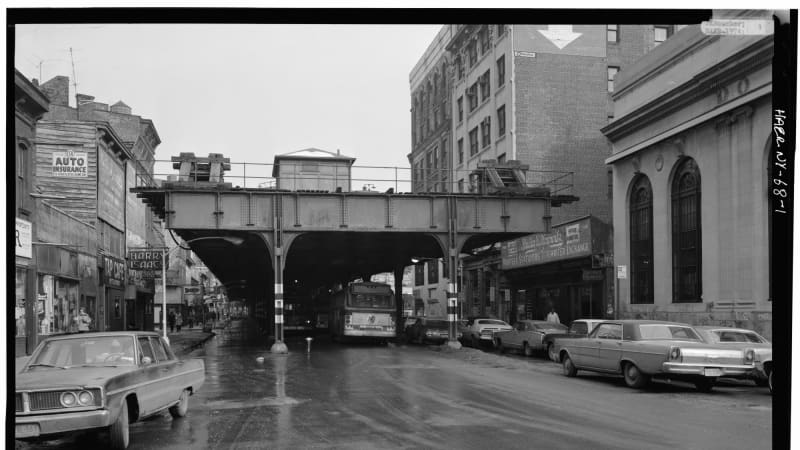
EAST TREMONT & THIRD AVE, 1974.
Photo by Jack Boucher, National Parks Service.
Demographic Shifts and A Mosaic of Cultures
During the era depicted in this play, East Tremont was in the midst of significant demographic shifts. The neighborhood experienced a complex interplay of racial and socioeconomic factors, where white Irish Catholics - despite their working-class economic status – had upheld and benefited from societal advantages as part of the broader demographic majority within the city.
"In 1960, the city was 78 percent white," according to The New York Times. But the population was shifting. Dr. Frank S. Kristof from the New York State Urban Development Corporation noted, "We're losing the white middle class, but we're getting a larger black middle class all the time," subtly tempering the impact of this demographic shift. "That makes losing the white middle class not quite as noticeable as it otherwise would be."
The South Bronx, including East Tremont, underwent a substantial transformation from being primarily non-Hispanic white in 1950 to predominantly Black or Puerto Rican by the end of the 1960s. Post-World War II white flight and the continual migration of ethnic and racial minorities to the city contributed significantly to this change. ("White flight" refers to the phenomenon where predominantly white residents move away from urban areas to suburban areas, often in response to an influx of non-white residents.) Moreover, the extension of the Cross Bronx Expressway in the mid-1960s permanently altered East Tremont's landscape, displacing thousands and leading to increased vacancy rates and decreased property values. Irish Catholics concentrated themselves in specific Bronx enclaves further north. Shanley's East Tremont neighborhood, while identifiably Irish, wasn't among the larger enclaves.
In his portrayal of the Bronx in Irish America Magazine, Peter Quinn details the diverse landscape: the Grand Concourse serving as a hub for Jewish families, while neighborhoods like Highbridge, Kingsbridge, and Woodlawn were predominantly Irish. The Fordham area was neighbored by the affluent Irish parish of St. Nicholas of Tolentine and the tight-knit Italian village of Belmont. The once Irish/Jewish South Bronx transitioned to house newly arrived Puerto Ricans and African Americans, while "the East Bronx was a trifecta of Jews, Irish, and Italians."
It is in this East Bronx area - the so-called trifecta - that Shanley grew up and the play is set. By 1964, East Tremont was a melting pot of cultures, primarily populated by first- or second-generation immigrants, contributing to the neighborhood's rich diversity.
East Tremont's narrative is one of adaptation, endurance, and the perpetual interplay of cultures. Its streets bore witness to a vibrant mosaic crafted by the aspirations, challenges, and triumphs of its diverse inhabitants, etching a lasting imprint on the soul of the Bronx.
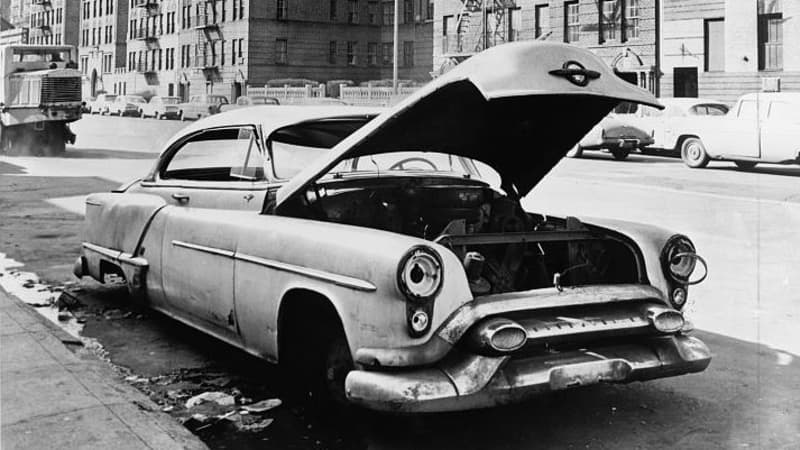
Macombs Road, 1964.
Photo by Phil Stanziola, Library of Congress.
Religion and Music in the Neighborhood
Shanley's depiction of Father Flynn in Doubt: A Parable offers a glimpse into the everyday life of East Tremont. Clergy people were familiar figures woven into the fabric of the neighborhood. Their opinions carried weight beyond Sunday sermons, becoming integral parts of every Irish Catholic's daily existence.
As noted by Richard Hornby in the Hudson Review, although Father Flynn's first sermon on 'doubt' sets the play in motion, "other speeches he delivers in the play, on the importance of cleaning under your fingernails or how to shoot a basketball foul shot, are more what we would expect from a typical American priest in 1964." A priest's advice extended far beyond the pulpit.
And in East Tremont, the resonance of church voices mingled harmoniously with the sound of music. Despite being part of an Irish Catholic family, the musical landscape for a young boy growing up in the Bronx's Irish enclaves in 1964 was far from limited. It was a vibrant mix.
Teenagers danced to chart-toppers like The Beatles' "I Want to Hold Your Hand” and Orbison's "Oh, Pretty Woman." Blocks away, Italian doo-wop groups harmonized popular tunes on street corners. Yet, beyond these national hits, the Bronx was a melting pot of musical flavors.
Latin bugalú, a fusion of Latin, jazz, and R&B with bilingual lyrics, gained momentum in the late '60s. This unique blend of Black and Latino rhythms thrived in the Bronx, propelled by artists like Pete Rodríguez and Hector Rivera.
Adding to this rich musical tapestry, Bronx-born crooner Jerry Vale brought romance to the airwaves with Italian tracks like "Have You Looked into Your Heart," later embraced by Scorsese in his film soundtracks.
Far from being confined to mainstream tunes, Bronx teens reveled in an eclectic mix of global sounds, embracing and creating diverse music within their own neighborhood.
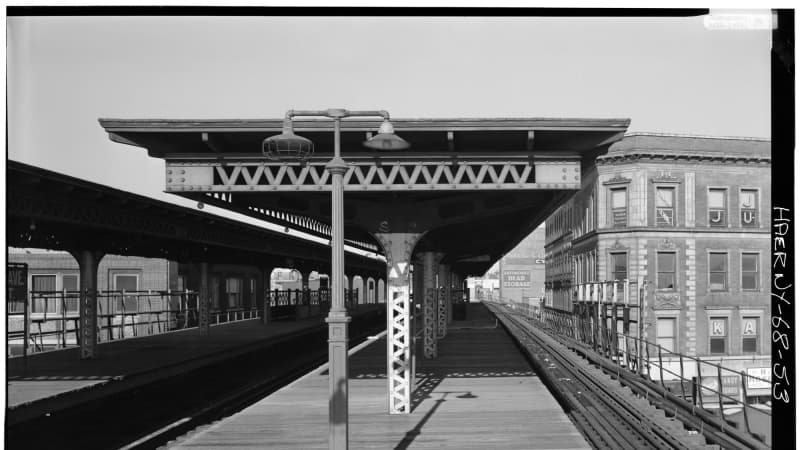
East Tremont subway platform, 1974.
Photo by Jack Boucher, National Parks Service.
CHARACTER OF THE BRONX
The Bronx in the 1960s was not merely a backdrop; it was a vibrant mosaic of intertwined narratives, each thread reflecting the complexities of a community containing a blend of identity, race, and class dynamics — a tapestry that inspired several Shanley's narratives, enriching his stories with the soul and essence of East Tremont itself.
References:
|
Note: Members of the New York Public Library can access JSTOR and many other research databases through the library’s Articles & Databases page. Hornby, Richard. “Beyond a Reasonable Doubt.” The Hudson Review, vol. 58, no. 3, 2005, pp. 469–75. JSTOR. "Hearts and Minds." The Brian Lehrer Show, New York, NY 1 June 2012. [Radio broadcast]. WNYC. Shanley, John Patrick. "Who's Who In the Cast." Playbill. 31 March 2005. Bromley, Ray. “Globalization and the Inner Periphery: A Mid-Bronx View.” The Annals of the American Academy of Political and Social Science, vol. 551, 1997, pp. 191–207. McGreevy, John T. “Bronx Miracle.” American Quarterly, vol. 52, no. 3, 2000, pp. 405–43. "Top Records of 1964." Billboard, 2 Jan. 1965, p. 6. Southall, Ashley. "Jerry Vale, Crooned Smoothly of Love, Is Dead at 83." The New York Times, 19 May 2014. |



